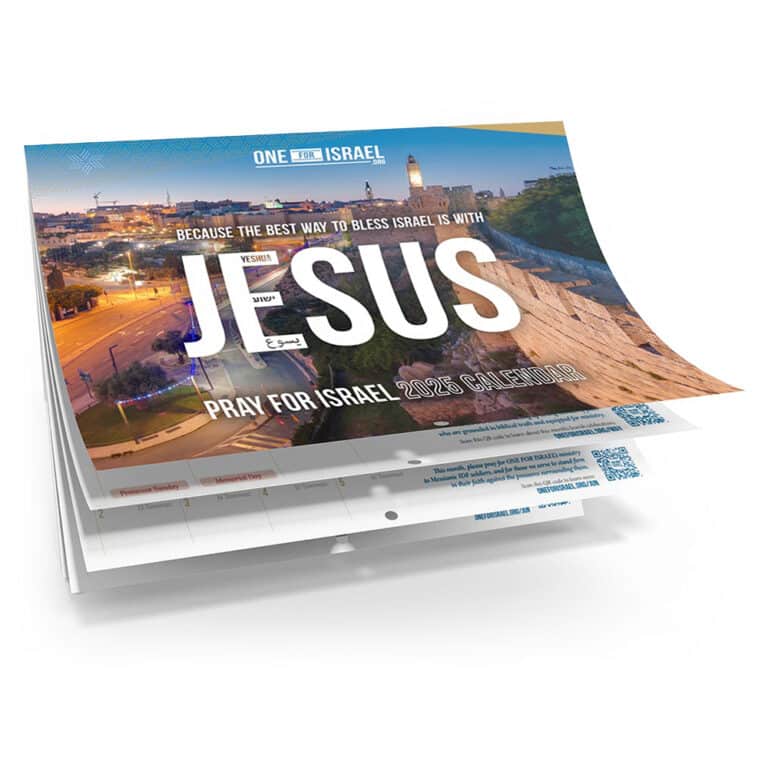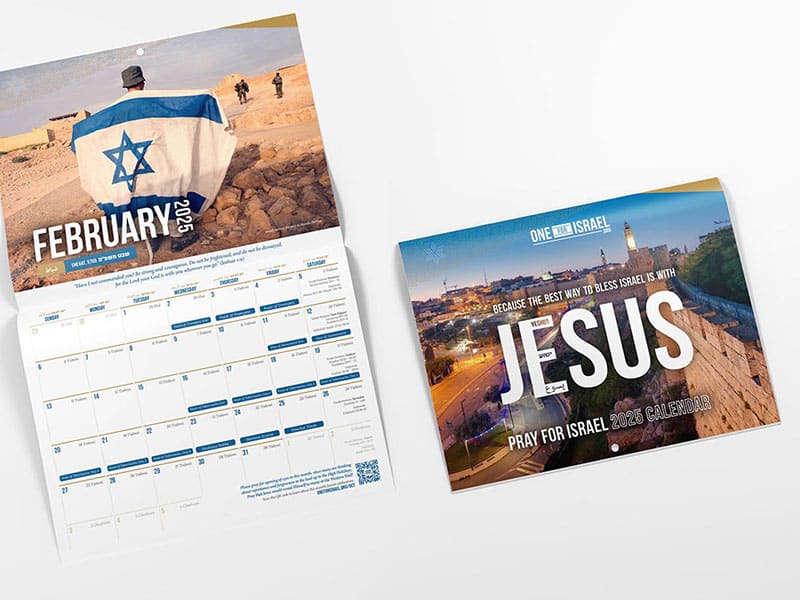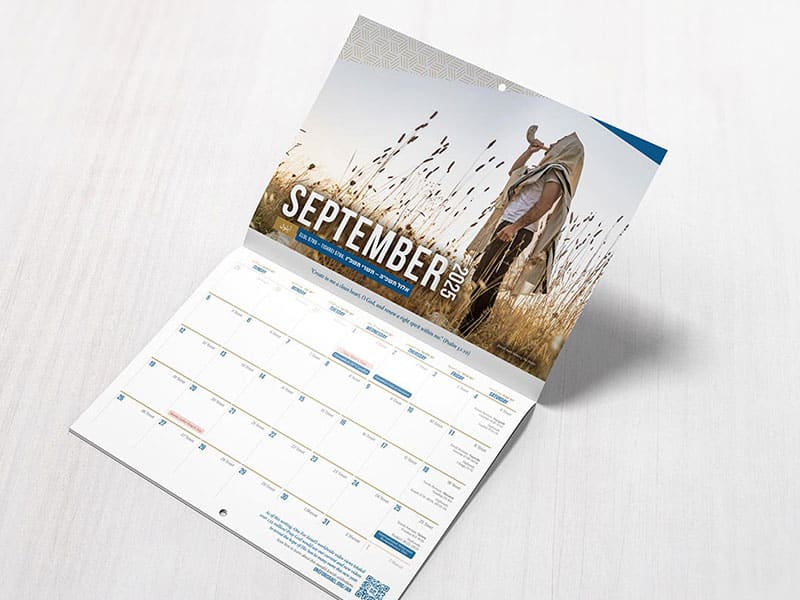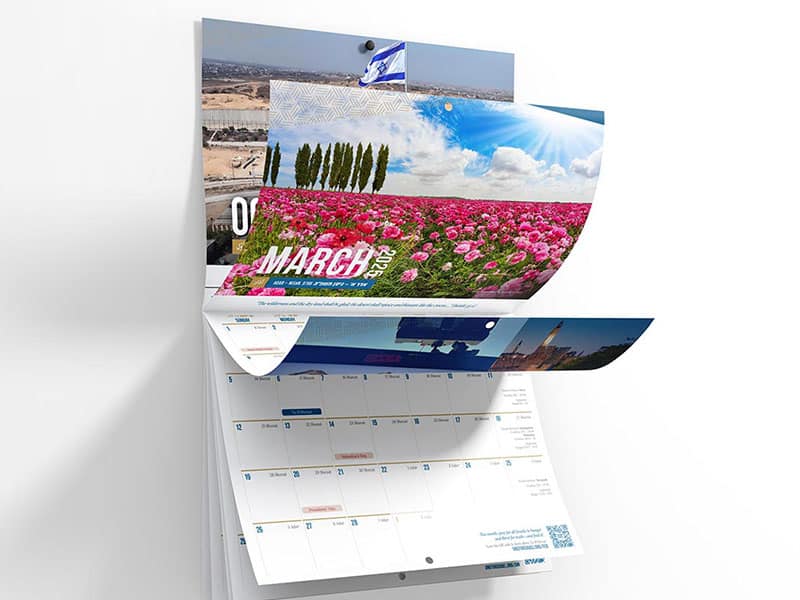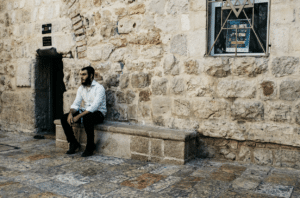“But who do you say I am?” Yeshua asked.
Simon Peter answered, “You are the Messiah, the Son of the living God.”
Yeshua said to him, “Blessed are you, Simon son of Jonah, because flesh and blood did not reveal this to you, but My Father who is in heaven!”
Peter was hot off the marks in every regard. Hot-headed and tempestuous, quick and eager to believe. He was the first to jump out of the boat and walk on water at Yeshua’s invitation, the first to believe it was even possible, and the first to hit the nail on the head regarding Yeshua’s true identity. He was a passionate man of faith, but a picture of steady, solid stability? Not so much.
Just as the Angel called little Gideon “Mighty Warrior” as he cowered, hiding in a winepress, Yeshua calls Peter his rock – the most unstable and volatile disciple of them all! He was enthusiastic and quicker than the others to believe and to nail his colors to the mast, but he was also fiery and impulsive. But Yeshua calls him into his identity as a strong leader, just as Gideon was called into his.
“And I also tell you that you are Peter, and upon this rock I will build My community; and the gates of Sheol will not overpower it.” (Matthew 16:18)
This verse has caused much consternation and controversy about whether or not Yeshua was establishing a papacy here – clearly Peter was foundational in the early church, but what did Yeshua mean exactly? And there are also some other important peculiarities in this verse that get overlooked, but we’ll get into those later.
First, let’s deal with this rock business.
The verse contains a word play, since the name Peter means rock. Yeshua basically said, “Simon, from now on you are called Rock, and on this rock I will build my church”. In Greek the words are slightly different since the word for Peter is the masculine word for rock (Petros) and the second time it’s mentioned is feminine (Petra) but essentially it’s the same thing. Yeshua was most likely speaking Aramaic, which has no distinction, so he would probably have said, “You are Kephas, and on this Kephas I will build my community / church”. The arguments about whether it is or isn’t the same word seem futile – Yeshua was making a deliberate word play to draw this parallel. But what was his point?
A rabbi shared a helpful picture with me about what Jewish thought is like when it comes to reading the Scriptures. “It’s a bit like Wikipedia”, he explained. Each concept is hyperlinked so you can click on it and it will whisk you off into that world – each word, each concept, each place name has a host of associations that are connected within the Scriptures. Getting to know your way around that interconnected web is a very Jewish approach to Bible study. Take the words “thorns” or “lamb” or anything really, and then look sideways, scanning the Scriptures for other instances that give meaning to that concept in the light of how it appears elsewhere.
Let’s scan forwards to see what Peter had understood Yeshua to be saying, as he passes on the message to the rest of the church.
He says,
“As you come to Him, the living stone, rejected by men, but chosen and precious in God’s sight, you also, like living stones, are being built into a spiritual house to be a holy priesthood, offering spiritual sacrifices acceptable to God through Jesus Christ. For it stands in Scripture: “See, I lay in Zion a stone, a chosen and precious cornerstone; and the one who believes in Him will never be put to shame.”” 1 Peter 2:4-6
A stone, rejected by men? Where else is that in the Bible? It’s in Psalm 118, one of the Messianic Psalms that Peter and the disciples would have sung with Yeshua after the Passover meal, on the evening he was arrested. It goes like this:
I give You thanks, because You have answered me and have become my salvation (Yeshua).
The stone the builders rejected has become the capstone.
It is from Adonai: it is marvelous in our eyes!
This is the day that Adonai has made! Let us rejoice and be glad in it!
Hoshia-na! Please, Adonai, save now! We beseech You, Adonai, prosper us!
Baruch haba b’Shem Adonai— Blessed is He who comes in the Name of Adonai.
We bless you from the House of Adonai.
Yes, Peter is referencing the cornerstone that the builders rejected, the Messiah, Yeshua. He says, “Come to Him, the living stone, rejected by men, but chosen and precious in God’s sight”… and then he encourages the church members that we are all like living stones too, being joined together to make a spiritual house.
Then we can think of the disciples, again, shortly before Yeshua’s death, marveling at the huge stones of the temple. Yeshua assured his disciples that despite the magnitude of the temple, every stone would be torn down (Luke 21) and in John he claims that he will raise it up in three days. What is he talking about? He is outlining God’s plan to make us, his people, into his temple. We become those stones. Some spiritual stones were key in the foundations of this new building, and Peter certainly played a very important part as the early church was being established, but each part does its work to build up the whole.
Not one stone, but many
Peter didn’t think that there was only one stone that made up the body of God’s temple, but many.
If there was one particular stone that was special here, it was Yeshua.
Just as he clocked Yeshua’s identity before the others, again Peter understands the identity of THE Stone, and also the stones that the rest of us are. He is using a different Greek word here – lithos – but he uses the same word to describe Yeshua, the cornerstone prophesied of in the Jewish Scriptures. Yeshua himself draws the link:
Yeshua said to them, “Have you never read in the Scriptures? ‘The stone which the builders rejected, this has become the chief cornerstone. This came from Adonai, and it is marvelous in our eyes.’ Therefore I say to you, the kingdom of God will be taken away from you and given to people producing its fruits. Whoever falls on this stone will be shattered; but the one upon whom it falls, it will crush him.” (Matthew 21:42-4)
And again, we will scan across the scriptures to another place where this idea is mentioned: Jesus here is referring to Daniel 2, which speaks of the coming Kingdom of God. King Nebuchadnezzar has a dream, which Daniel interprets, giving a clue about the coming Messiah:
“You looked, O king, and behold, there before you stood a huge statue—an enormous and dazzling image, whose appearance was awesome. The head of that statue was of pure gold, its breast and its arms of silver, its belly and its thighs of bronze, its legs of iron, and its feet partly iron and partly clay. While you were watching, a stone was cut out, but not by hands. It struck the statue on its feet of iron and clay and smashed them. Then the iron, the clay, the bronze, the silver and the gold were crushed together, and became like chaff from summer threshing-floors that the wind blows away. Not a trace of them could be found. Then the stone that struck the image became a great mountain and filled the whole earth.” (Dan 2:31-35) …
“Now in the days of those kings, the God of heaven will set up a kingdom that will never be destroyed, nor will this kingdom be left to another people. It will crush and bring to an end all of these kingdoms. But it will endure forever. For just as you saw a stone cut out of a mountain, yet not by hands, crush the iron, bronze, clay, silver and gold, the great God has made known to the king what will happen in the future. Now the dream is certain, and its interpretation is trustworthy.” (v44-45)
Yeshua identifies himself with that stone that smashes and crushes everything else. He is mightier than every other kingdom, power and authority. This is the Kingdom of God that Yeshua inaugurated on earth when he came in the flesh. This is the Kingdom that now lives in us. This is the stone that Jesus is referring to. It is no mere pebble or small stone, but is huge and mighty. And Peter says we are like this living stone, we are all his priests.
The pattern of the Tabernacle
Before the temple made of stone was the tabernacle that was carried around the desert with the people of Israel. A close study of the tabernacle and all its accoutrements also yields some very helpful understanding. The tabernacle is a pattern of salvation, with each part representing God’s salvation plan, as the author of Hebrews describes in detail. One interesting aspect of the tabernacle construction is the boards that form the walls of the tabernacle (Ex 26). They are made of wood, covered in gold, and rest in silver sockets which secure them to the ground. This is a picture of believers: the wood is our mortal state – unglamorous and corruptible, but we are covered in gold, which represents the holiness and purity of God. The silver speaks of redemption, and we rest in our redemption through Yeshua, no longer rooted and connected to the world but yet still in it. The boards are linked together with bars, creating unity, and walls, much like the walls of Nehemiah which are often likened to the people of God, and our need to breach the gaps and strive to build unity so that we are not so susceptible to attack from the enemy. The idea of God’s people joined together to be the house of God is not new!
God’s intent was always to dwell in and among his people, as he says in Exodus, and declares with great joy in Zechariah 2 – “I’m on my way! I’m coming to live among you!” Yeshua’s incarnation was part of this pattern of God living among his people. With his death and resurrection, we have been purified from sin and made into a fitting sanctuary for God’s Spirit. Today he lives in us, but Jesus will also come to rule and reign among us in Jerusalem at the end of days.
And now for those other interesting peculiarities
Blessed are you, Simon Son of Jonah…
Son of Jonah? A scan back to the story of Jonah reminds us that he was unusual in that he was sent to take the word God to Gentiles. Peter would also be called by God to Cornelius and his household in Acts 10, after an altogether horrifying revelation about bacon on a rooftop in Jaffa. Neither Jonah nor Peter were thrilled with the job, but both were sent to repentant Gentiles, to minister to them and bring the Good News.
The Gates of Sheol will not prevail against it…
Most of the time we breeze through this phrase, thinking it means that whatever Satan tries to do against the church will not succeed. But wait. Take a closer look. It says the gates of hell, or sheol, will not prevail. Have you ever heard of gates attacking anyone? Gates are not for attack, they are for defense! Yeshua is saying that the enemy will not be able to stop the relentless advance of the Kingdom of God and the power of the gospel. When we come against the kingdom of darkness with the liberating truth of Yeshua, we can break down the doors and set the prisoners free, and he will not be able to stop it. His efforts to protect his territory and keep people captive will ultimately fail.
And lastly, let’s look at the word for hell, sheol. Jon Levenson summarises this shady concept brilliantly, when he says that sheol describes “the powerful and malignant forces that negate life and deprive it of meaning”[1]. All of the enemy’s desire to negate life and deprive it of meaning will be powerless to withstand the oncoming barrage of living stones – God’s temple, Yeshua’s living community, his body, the church!
So was Yeshua picking a Pope?
No. Yeshua was not picking a Pope or establishing a global hierarchy with one person at the top to whom every believer must submit. Each local congregation needs leaders, and those who are appointed to lead carry God’s authority and have a very serious responsibility before the throne of God. But Peter himself affirms that we are all part of God’s temple together, using the language of stones and construction. He repeats that we are all priests, all holy, and all hosting the presence of God, Immanuel, who loves to dwell with his people.
[1] Jon D. Levenson, Resurrection and the Restoration of Israel: The Ultimate Victory of the God of Life, Yale University Press, 2006, p.72

